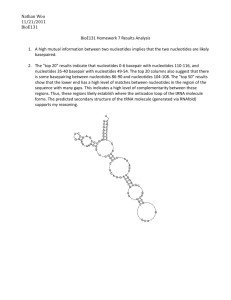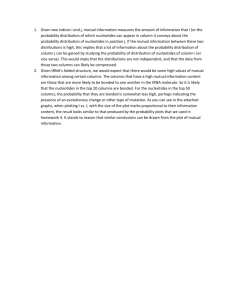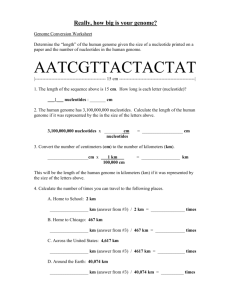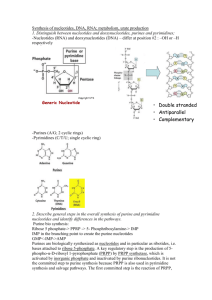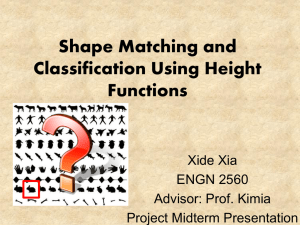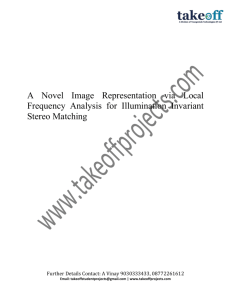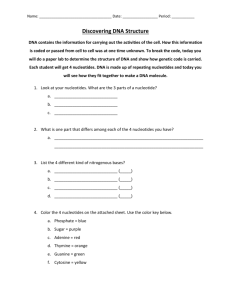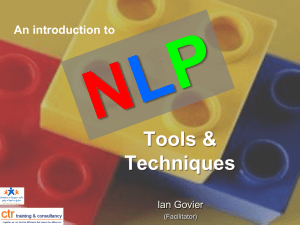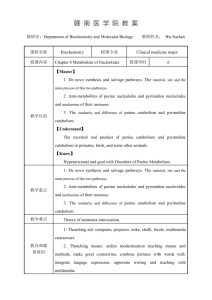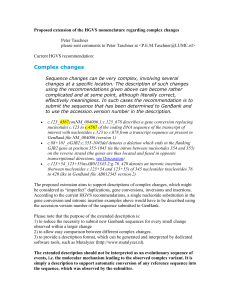Function-specific accelerations in rates of sequence evolution
advertisement
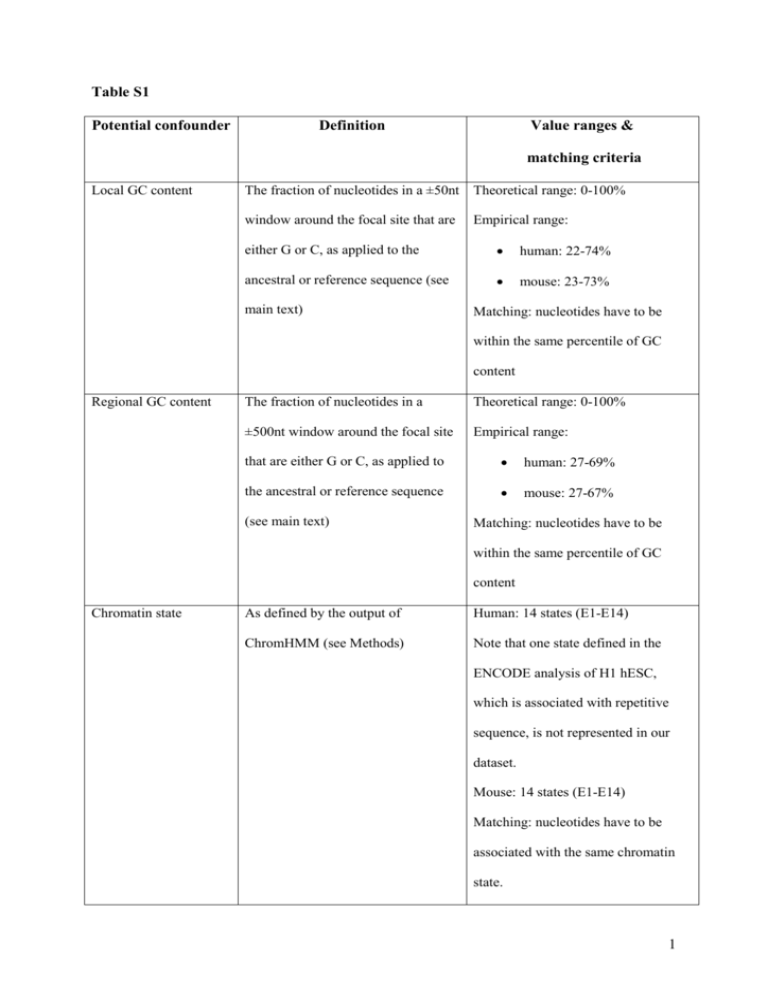
Table S1 Potential confounder Definition Value ranges & matching criteria Local GC content The fraction of nucleotides in a ±50nt Theoretical range: 0-100% window around the focal site that are Empirical range: either G or C, as applied to the human: 22-74% ancestral or reference sequence (see mouse: 23-73% main text) Matching: nucleotides have to be within the same percentile of GC content Regional GC content The fraction of nucleotides in a Theoretical range: 0-100% ±500nt window around the focal site Empirical range: that are either G or C, as applied to human: 27-69% the ancestral or reference sequence mouse: 27-67% (see main text) Matching: nucleotides have to be within the same percentile of GC content Chromatin state As defined by the output of Human: 14 states (E1-E14) ChromHMM (see Methods) Note that one state defined in the ENCODE analysis of H1 hESC, which is associated with repetitive sequence, is not represented in our dataset. Mouse: 14 states (E1-E14) Matching: nucleotides have to be associated with the same chromatin state. 1 Biotype Biotypes as defined by Ensembl One of exon, intron, 3’UTR, 5’UTR, annotations for mm10 and hg19, or intergenic respectively. Nucleotides covered by Matching: nucleotides have to be more than one biotype (e.g. being associated with the same biotype. exonic in some transcript isoforms but intronic in others) are excluded Upstream nucleotide The nucleotide immediately One of A, C, G, T upstream on the same strand as the Matching: the upstream nucleotide focal cytosine has to be the same type for both partners in the matching pair. Methylation level Defined by the number of reads Theoretical range: 0-100% supporting a methylated state divided Empirical range: 0-100% by the number of total reads at that Matching: nucleotides have to be position within the same decile of methylation level. 2
